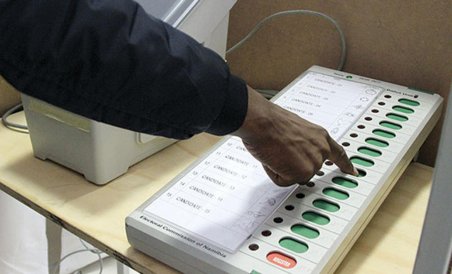Real problem in India is that the implementation of schemes and programmes is not done properly in different areas.
New Delhi: The issues of unemployment, inflation, political and economic challenges are visible for ruling parties, especially the government at the Centre and the Bharatiya Janata Party (BJP), even before the Assembly elections of five states. What is interesting is that on perusal of the files of news reports or articles since 1971, one realizes that during the last Legislative Assembly or Lok Sabha elections, more or less these same issues have dominated the discourse and debate in meetings and discussions across the country. The question that arises, therefore, is: Despite so many changes and all the efforts, programmes, schemes and claims of the Modi government, has nothing changed? There is no doubt that there are still problems, but by studying the factual and practical situation of various backward or advanced states, it can be understood that yes, the migration of labourers from poor rural tribal areas is decreasing continuously. The educated unemployed are more visible in metros or other big cities, but in small towns and villages self-employment, people associated with a skill are getting work. Not only this, in metros like Delhi or Mumbai, workers like a general electrician and plumber usually earn about Rs two thousand by doing repair work in five seven houses. If he works 25 days out of 30, he gets Rs fifty thousand. On the contrary, when the same person is asked in the survey, the answer is yes, he does not have any job, which means he is unemployed. Similar figures are found more in the records of the Planning or NITI Aayog and media.
In this background, I want to give some recent examples. Twenty years ago, not only from neighbouring Uttarakhand, but also from Chhattisgarh, Bihar, Jharkhand, Odisha, Bengal and northeast region, a large number of men and women or their families continued to come to Delhi, Mumbai, and Kolkata in large numbers and found work in home, shop, small and big industries.
In Mumbai, at one time, the Shiv Sena had even started committing violence while opposing outside workers. In my own house and some other families, members of the family who came from Chhattisgarh-Bengal (I understand, members of two generations) are working continuously. Most of the workers from these outlying areas were found in the farm barns in Punjab-Haryana. Last week, I called up some familiar journalists and officials in Raipur, Patna, Ranchi, Guwahati and wanted to know if I could find any woman or person working from home in Mumbai and Bangalore. I got almost identical answers. He said that now such people can hardly be found. Yes, people are going abroad by writing more studies. But for the last few years, the migration of workers has reduced a lot, because they have started getting some work here. So the workers of Orissa are not coming to Chhattisgarh or Jharkhand. You should find out in Punjab itself that even before the Covid-19 crisis started, it was difficult to get outside workers. Before the corona era, before the Haryana Legislative Assembly elections, there was an opportunity to talk to the small medium scale entrepreneurs and factories of Faridabad-Gurgaon with a TV team. He said that all the youth who came out of the skill development center of the government are getting work here; on the contrary, we need more such skilled artisans. These artisans also get salary of about Rs 25,000-30,000 and some government health insurance, PF etc. Yes, there is a problem when, in a few months or a year or two, that artisan goes away after finding work elsewhere.
As far as skilled craftsmen are concerned, in Madhya Pradesh and Chhattisgarh also, I got to hear about the youth coming out of skill development centers getting work there. Similarly, women or youths who have worked in Delhi from Assam and Manipur have to return home, to build their own house there, to build toilets, to cultivate agriculture, to get the benefit of government health scheme. Naveen Patnaik is ruling Odisha for 20 years. National political parties still could not defeat them, because as much as possible, they implemented beneficial schemes for the poor rural tribal areas of the state.
Therefore, the challenges are not only of one party, nor of any one government. The real problem in India is that the economic progress and implementation of many schemes and programs are not done properly in different areas—be it skill development centers or government schools, colleges, health facilities like free insurance scheme like Ayushman Bharat or for workers in unorganized sectors.
There are complaints of recovery even after money going directly to the people’s bank accounts. Complaints are also received in many places including Delhi in giving free ration. Here, more than just the governments, workers of different political parties can be sincerely active and help the poor people. Can’t political parties which claim to have ten, twenty crore or several lakh members help such uneducated or under-informed people, instead of just being concerned about vote banks? They can get more support if they are active like this rather than just doing politics of accusation. Elections, issues, governments will come and go, but to make the country truly self-reliant, more sincere efforts will have to be made at different levels.
(The author is Editorial Director of ITV Network India News Dainik Aaj Samaj)

